Rhizomes, corms, tubers... all the various terms get lumped into the category of “Bulbs.” But really, what are they? What are the differences? Does it matter? If I ask for an Iris bulb at the nursery, are they going to think I’ve lost my mind? Before I answer that, let me give a brief explanation of what each of these terms mean:
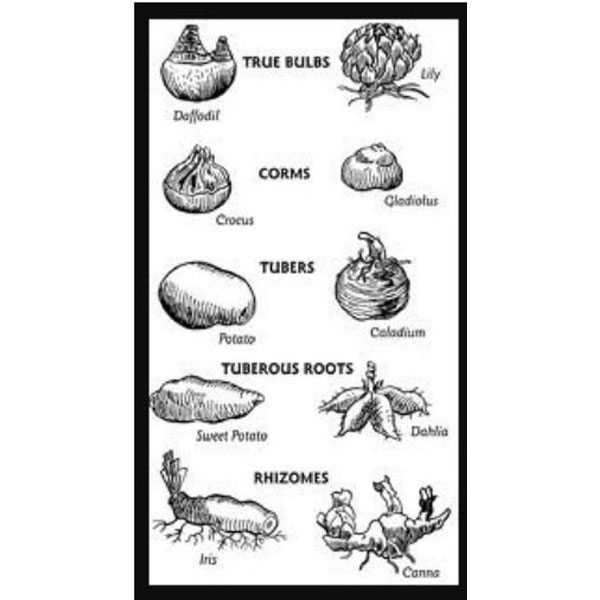

- Bulbs are modified leaves which store nutrients
- Corms are swollen stem bases
- Tubers are thick underground stems
- Rhizomes are swollen stems that grow horizontally
- They are ALL underground storage units. Let’s take a deeper dive into the subject.
Bulbs are a collection of underground leaves that store everything they need. Think tulips, onions, daffodils, alliums, hyacinths, lilies, amaryllis and garlic...
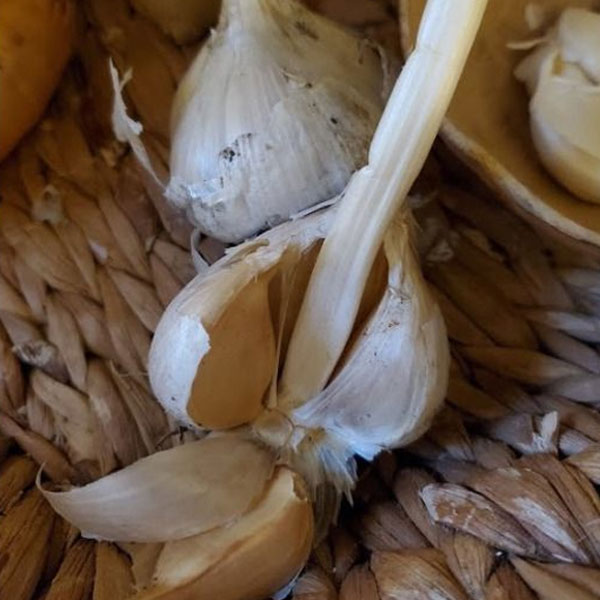

Garlic harvested in early August
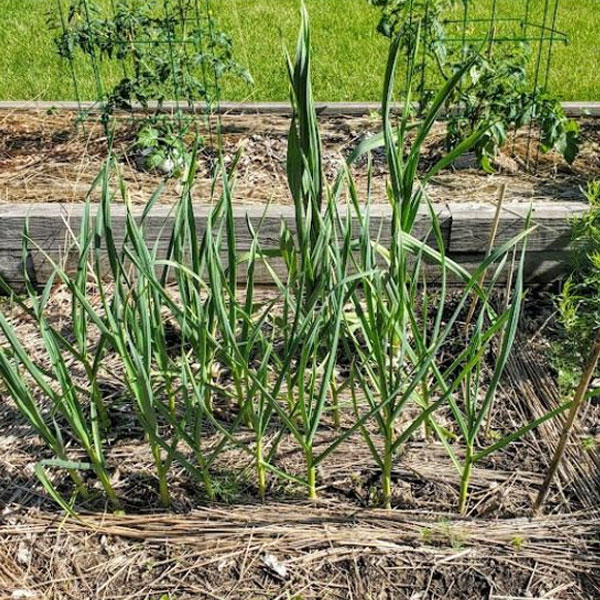

Garlic growing in late May
Corms are modified stems that store needed nutrients. Corms look like true bulbs, but they don’t grow outward circular rings. Young buds, which will produce the stems and flowers, form on the topside while roots and baby corms (adorbs!) form from the bottom. Flowering corms include gladiolus, crocus, freesia, and watsonia. The water lily is also a corm.
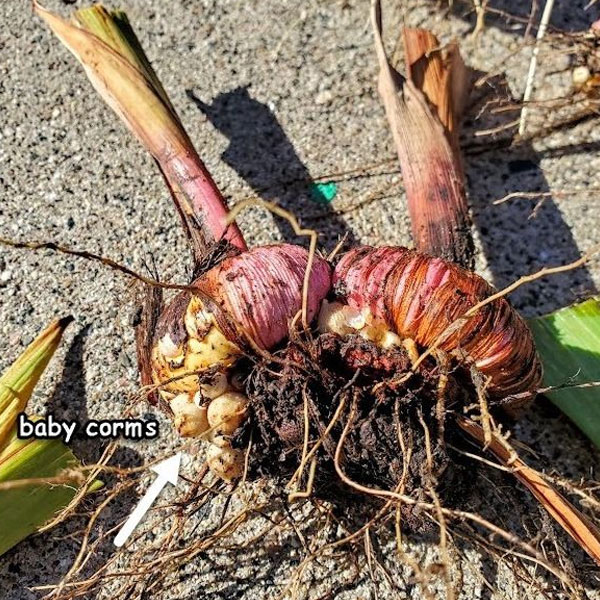

My gladioli dug up
Tubers grow underground. Think potatoes! Tubers have multiple “eyes” (buds). Yams are tubers too but not sweet potatoes, technically speaking. They’re tuberous roots. I know, it’s confusing! And we’re just not going there in "the scoop”! Begonias, cyclamen and anemones are examples of flowering tubers.
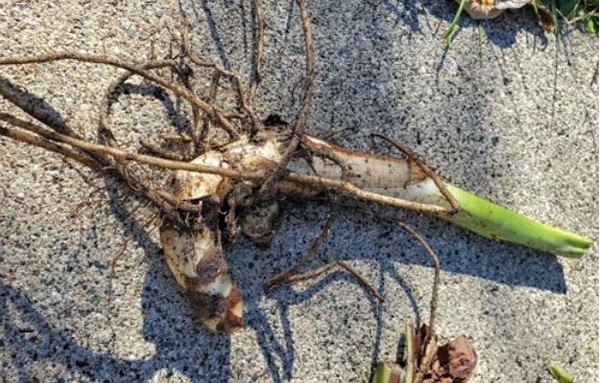

Canna lily rhizome
We plant hardy (ex. Tulips, daffodils, lilies) and tender (cannas, dahlias, begonias) bulbs in Minnesota. The tender bulbs must be dug up each Fall after their foliage has died back. If you don’t dig them out, you’ll lose them. Check out “Storing Bulbs”.
Now, back to the question of whether someone will think you’ve lost your mind if you ask about Iris bulbs... I can assure you they will NOT, it gets even more complicated with Irises. They come in bulbs, tubers and rhizomes! Oh, fer confusing! MOST are perennials here in zone 4. Be sure to check the label.
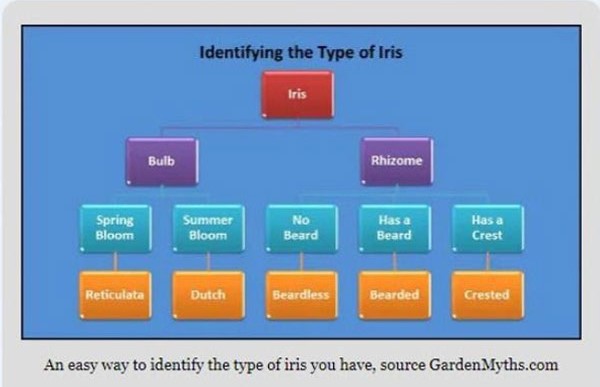

Planting depths vary for all bulbs mentioned. Always look at the package and, of course, check out the multiple articles in LEARN from the experts at Gerten!
Enjoy this video of Audra on Summer flowering bulbs:


The Broad category of Bulbs explained!
Rhizomes, corms, tubers... all the various terms get lumped into the category of “Bulbs.” But really, what are they? What are the differences? Does it matter? If I ask for an Iris bulb at the nursery, are they going to think I’ve lost my mind? Before I answer that, let me give a brief explanation of what each of these terms mean:
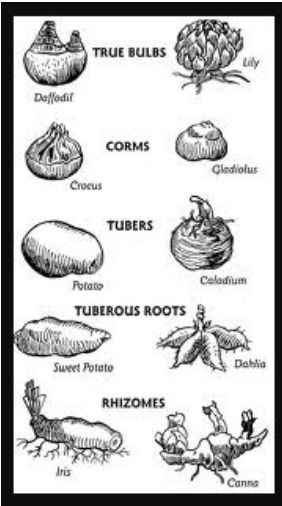
- Bulbs are modified leaves which store nutrients
- Corms are swollen stem bases
- Tubers are thick underground stems
- Rhizomes are swollen stems that grow horizontally
They are ALL underground storage units. Let’s take a deeper dive into the subject.
Bulbs are a collection of underground leaves that store everything they need. Think tulips, onions, daffodils, alliums, hyacinths, lilies, amaryllis and garlic...
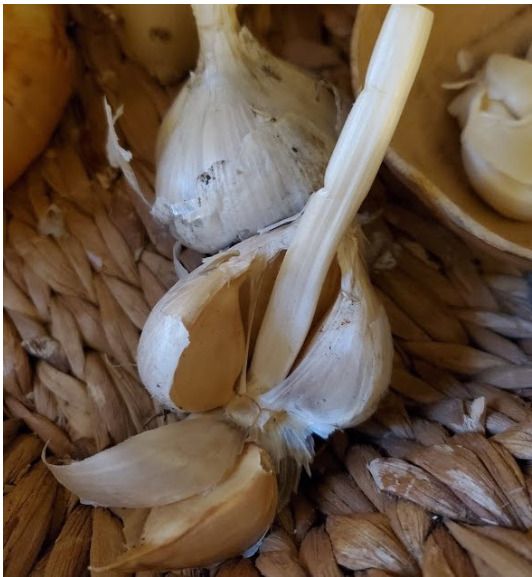
Garlic harvested in early August
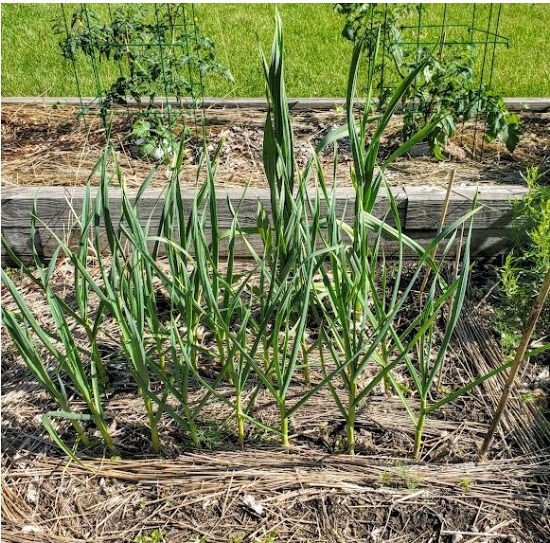
Garlic growing in late May
Corms are modified stems that store needed nutrients. Corms look like true bulbs, but they don’t grow outward circular rings. Young buds, which will produce the stems and flowers, form on the topside while roots and baby corms (adorbs!) form from the bottom. Flowering corms include gladiolus, crocus, freesia, and watsonia. The water lily is also a corm.
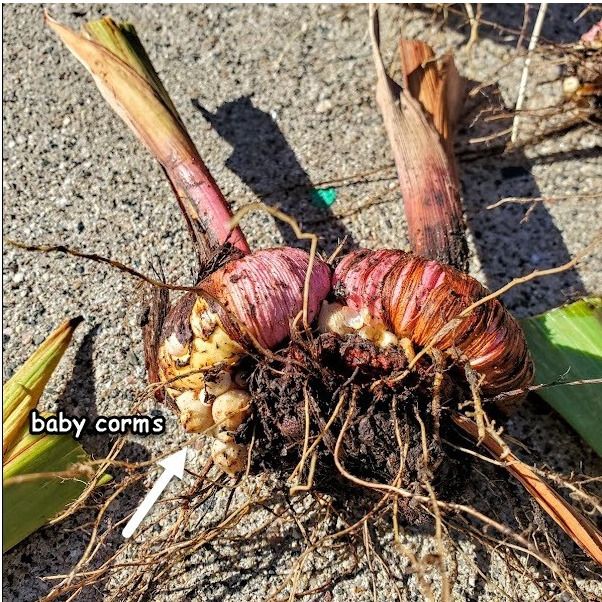
My gladioli dug up
Tubers grow underground. Think potatoes! Tubers have multiple “eyes” (buds). Yams are tubers too but not sweet potatoes, technically speaking. They’re tuberous roots. I know, it’s confusing! And we’re just not going there in "the scoop”! Begonias, cyclamen and anemones are examples of flowering tubers.
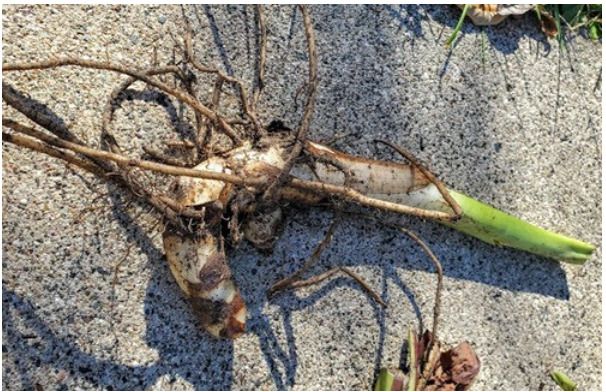
Canna lily rhizome
We plant hardy (ex. Tulips, daffodils, lilies) and tender (cannas, dahlias, begonias) bulbs in Minnesota. The tender bulbs must be dug up each Fall after their foliage has died back. If you don’t dig them out, you’ll lose them. Check out “Storing Bulbs”.
Now, back to the question of whether someone will think you’ve lost your mind if you ask about Iris bulbs... I can assure you they will NOT, it gets even more complicated with Irises. They come in bulbs, tubers and rhizomes! Oh, fer confusing! MOST are perennials here in zone 4. Be sure to check the label.
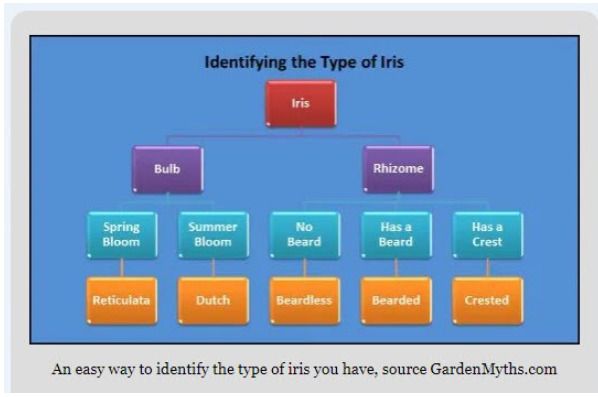
Planting depths vary for all bulbs mentioned. Always look at the package and, of course, check out the multiple articles in LEARN from the experts at Gerten!
Enjoy this video of Audra on Summer flowering bulbs.
The University of Minnesota Extension is also a great resource! Planting Bulbs (of all kinds).
And THAT is the “scoop” on bulbs,

